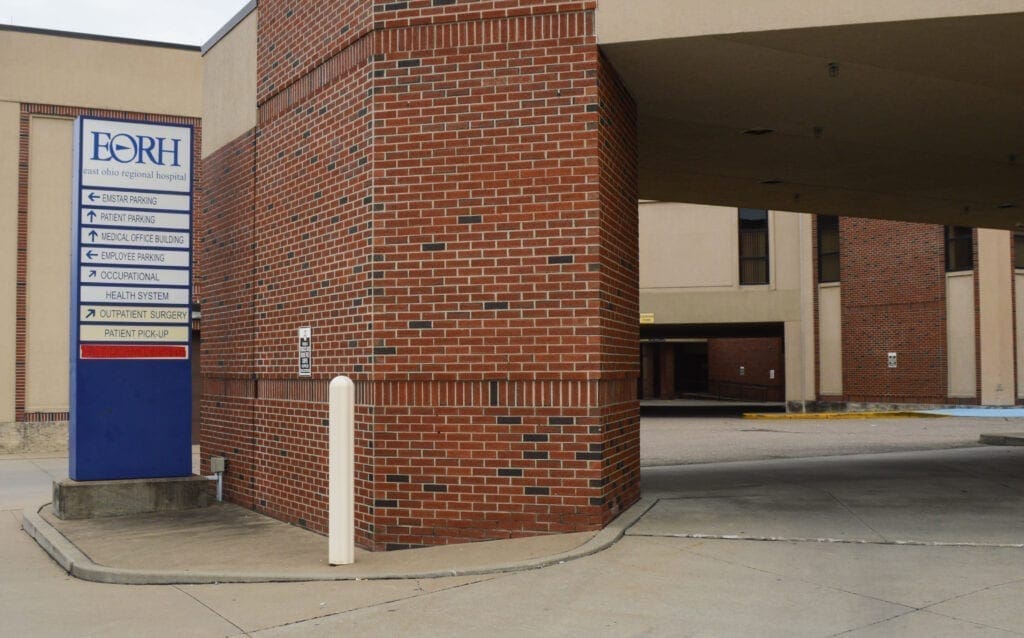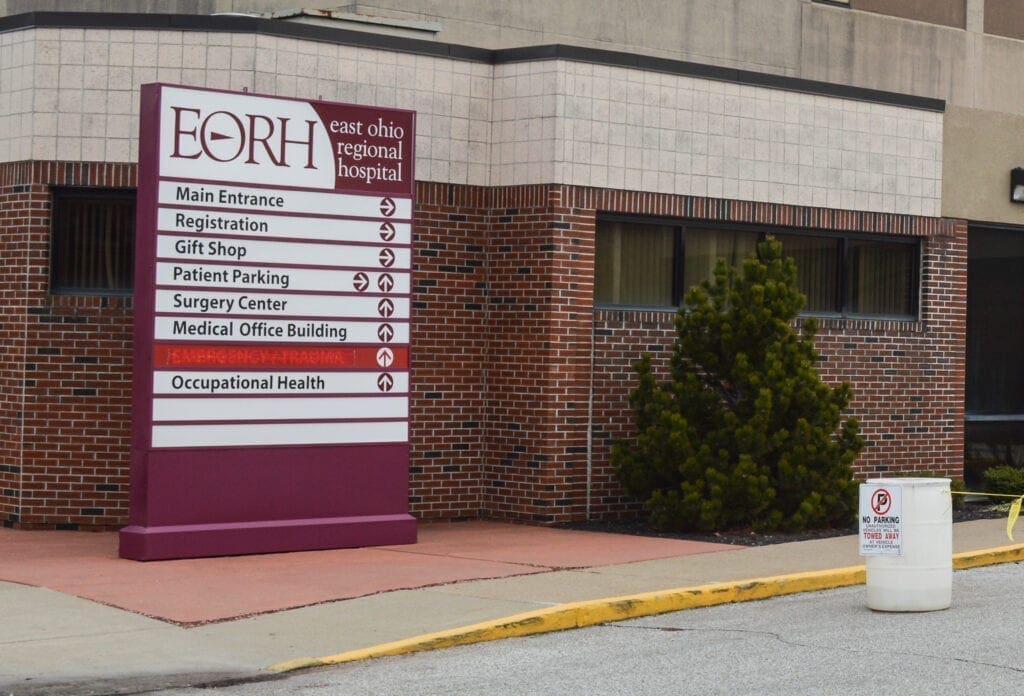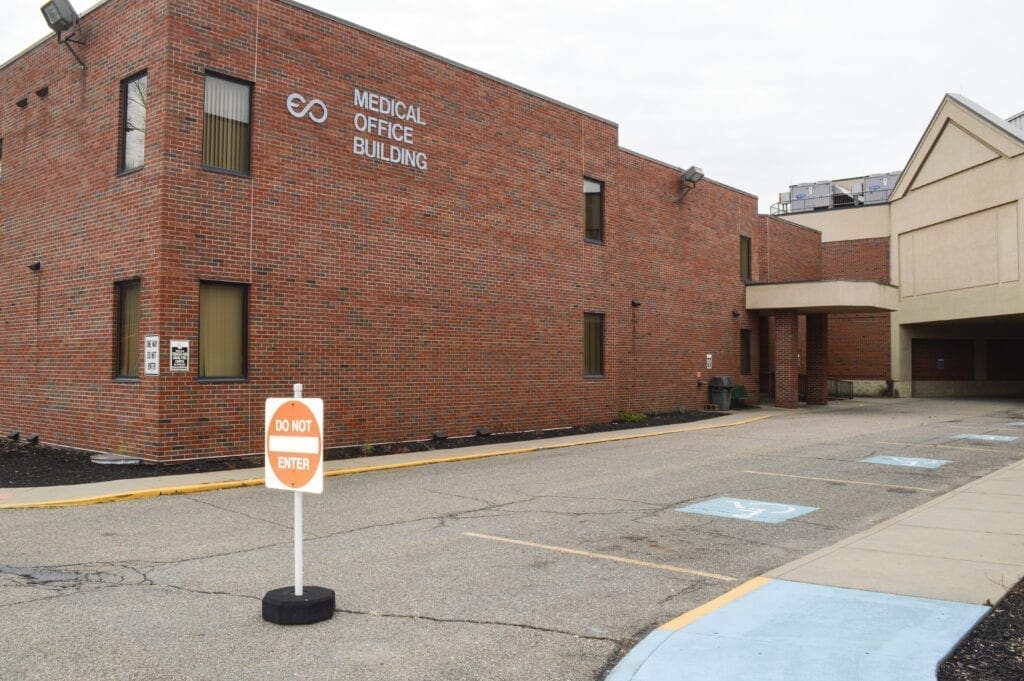(Publisher’s Note: This article was published in 2020 when hope was high that East Ohio Regional Hospital would reopen. Today, nearly all departments are fully functional.)
The moment the mayor and members of Martins Ferry’s City Council voted unanimously to move forward with an ordinance to partner with East Ohio Hospital LLC, Bernie Albertini envisioned a red light turning green.
In other words, it is “go time.”
The facility’s chief operating officer was formally introduced four days ago and since has been working diligently with prospective vendors, equipment companies, area physicians, and community members to formulate the plan to prepare for a reopening at some point in 2020. What that date is has yet to be officially determined, but Albertini revealed Thursday on The Watchdog (98.1 FM WKKX and 97.7 FM WVLY) what residents will witness in the coming months.
“What we are doing now is evaluating what it is we want to do and also how we are going to do it,” Albertini explained. “I know everyone is asking about the date for the reopening, but when we know, everyone will know that answer. But first, we have to wrap our arms around this thing now that we know we have the community’s support.
“We are addressing the physical infrastructure and also our staffing infrastructure,” he continued. “There is a plan and when we can, we will release that to give everyone an idea as what is happening here so they can follow the progress as each step we have to take is completed.”

The Front Door
Since late September, residents in the Wheeling Metro Area suddenly were left with only two emergency rooms, one at Wheeling Hospital and the other at WVU Medicine Reynolds Memorial Hospital in Glen Dale. That situation created crowds at both facilities while attempting to absorb approximately 40 percent of those patients.
That is why Albertini can see the ER at East Ohio Hospital to reopen first.
“The emergency room is what many people consider as the front door to any hospital,” he said. “But to open up that emergency room, we have to have the labs, radiology, and inpatients services available, so what I think it will look like initially will be having the emergency room and inpatient services so, if needed, we can admit someone if that’s what they need. We will also be opening our long-term care facility, and that will include 50 beds.
“There’s so much that goes into this operation to make sure the people who come to us for our help get the best possible care, and that’s what we plan to offer here in Martins Ferry,” the chief operating officer explained. “Phase Two most likely will involve mental health because of the need that exists here in the Upper Ohio Valley. I am not saying those services will be available the day we open, but it is in the plan for this facility, and so is drug and alcohol inpatient and outpatient rehabilitation. For us, it is about filling the voids that we have here now because of the closures that took place last year.”

True or False?
Albertini joined attorney David Croft with Spillman Thomas & Battle for several interviews this past week to make certain factual information was disseminated to local citizens via media outlets in the Upper Ohio Valley.
That is because of the positive aspects of this development, the support offered by elected officials in Martins Ferry, the potential job growth in East Ohio, and the health care needs that exist in the region.
“If people are hearing speculation that’s not coming from us, then do not believe it until it comes from us,” Croft insisted. “We’re the only people who know what it’s going to be and when services are going to be able to open. We have a dark hospital right now. That’s what has been purchased, and it’s going to take a lot of work to get those lights turned on again.
“The facility looks just fine from the outside, but there are challenges on the inside that a lot of people in the media and in the public cannot see. They were used to what was on the interior for so many years, but that’s not the reality today,” he continued. “There is still a lot of work that needs accomplished, and we hope to see it all come together as quickly as it can.”

Addressing the Need
In 2015, when East Ohio Regional Hospital was at its peak with more than 600 employees, Albertini was the COO and excited for the facility’s future. More than 300 local residents lost employment when EORH was shuttered seven months ago.
“We’re baking something right now, but we’re not sure how it’s going to turn out at this point because we’re confident that it’s going to take a community to make it all happen,” Croft said. “This all got started back in December 2019, and we introduced this plan to local, state, and federal officials, and I believe it became clear that the need existed for additional health care in this area. No one doubted that because of the closures and because of the interstate projects that have limited access to other facilities.
“When those closures took place, they took away about half of the emergency room visits here in the Valley, and those folks were bottle-necked into the ERs we had left, and the delays were troublesome for everyone around this area,” he continued. “Once the pandemic hit, there were delays, but then everyone involved got very serious about getting a deal done, and that’s what we were able to accomplish to this point. The work, of course, is far from done.”


